In a recent subway deep foundation pit monitoring project in China, our automated inclinometer Inclino-Robot played a crucial role in ensuring safety, efficiency, and precision. The project, a significant undertaking, involved a foundation pit that was 334 meters long, 21.1 meters wide, and an impressive 32 meters deep. With a diaphragm wall and internal support system, the project required a total of 74 boreholes, each reaching depths of 60 meters. The monitoring team demanded high accuracy and cost-efficiency from the monitoring equipment, and after careful consideration, they chose the Inclino-Robot.
This article will dive into the technical aspects of the Inclino-Robot, explore the benefits it brought to the project, and highlight why it stands out as a cutting-edge solution in deep foundation monitoring.
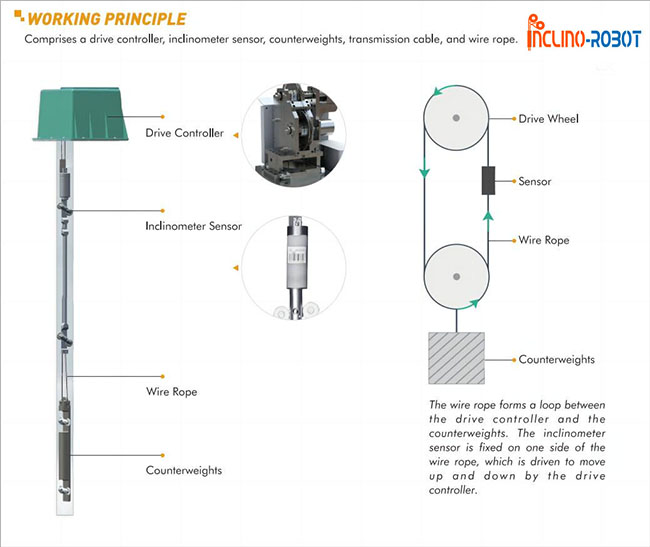
The Inclino-Robot is a new generation of automated in-place inclinometer, applied in structural health monitoring, bridge monitoring, deformation monitoring, building monitoring, etc. It can completely replace manual inclinometers howerer matches the same accuracy of manual models.
It is composed of three key parts: the inclinometer Drive controller, Inclinometer sensor, and counterweight. These components are interconnected by a steel cable, allowing the system to perform automated, vertical measurements by moving up and down the borehole.
This setup enables the Inclino-Robot to collect highly accurate data at regular intervals along the entire depth of the borehole, providing real-time insights into ground movements and the stability of the foundation pit.
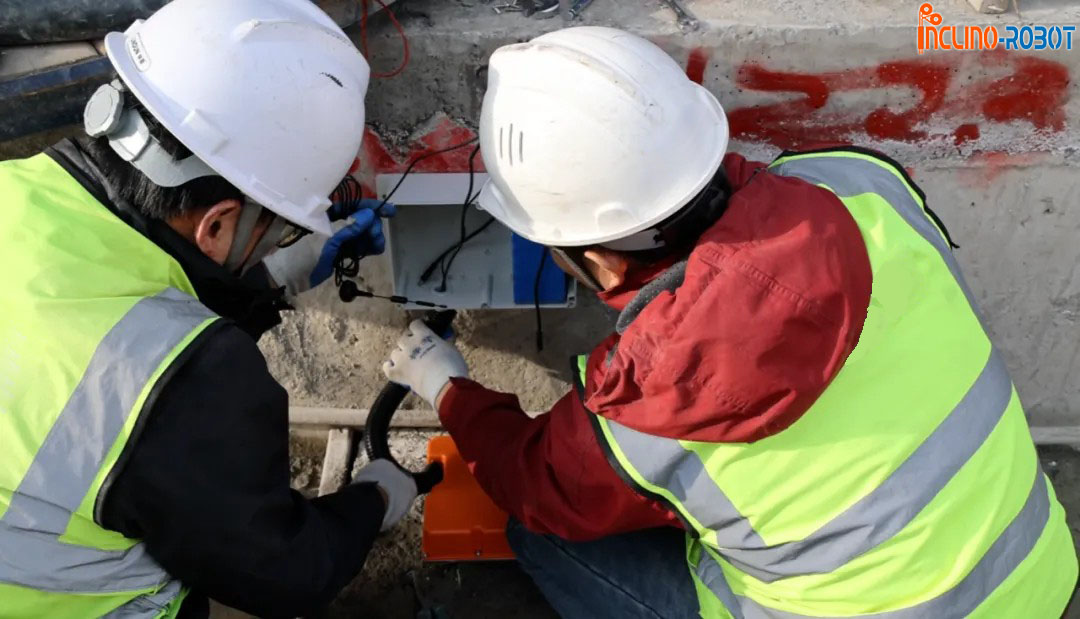
Initially, the clients were skeptical about the accuracy of our automated inclinometer since they had no prior experience with such technology. Our technical team thoroughly explained the working principle of the Inclino-Robot. Inclino-Robot follows the same measurement process as manual inclinometers, ensuring unparalleled accuracy with precision up to 0.25mm/m.
Meanwhile, we also provided them with case studies and customer previous reviews.
One of our clients provided feedback after rigorous testing on actual construction sites. The Inclino-Robot consistently produced results that matched those of the client's manual probe, ensuring reliable data and reinforcing confidence in the accuracy of the measurements for their project.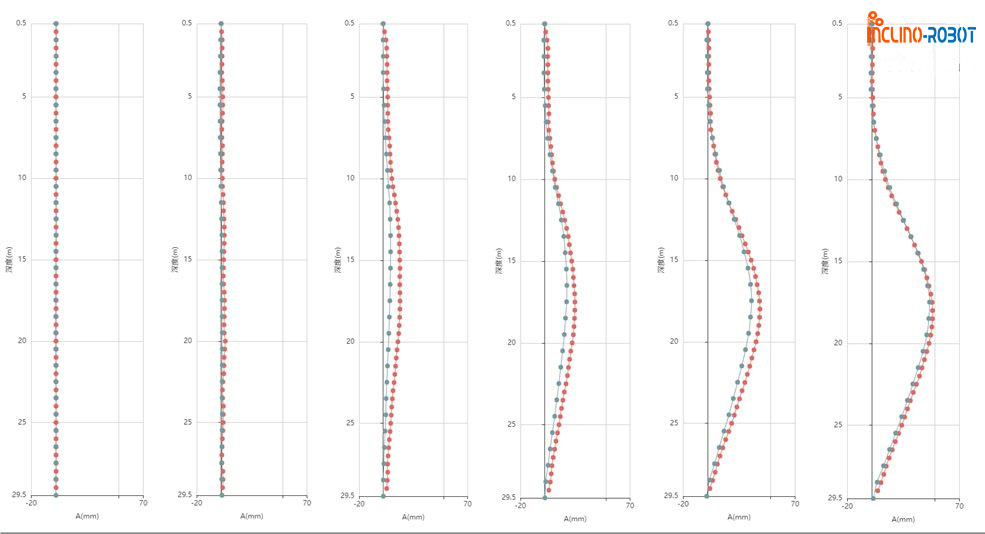
Download the test results: Test Results of Inclino-Robot and a traditional manual inclinometer.pdf
In a traditional flexible inclinometer, the installation process is time-consuming and labor-intensive. Typically, 3-4 workers are required to handle the setup, calibration, and adjustments, and each borehole can take between 3 to 5 hours to complete. Given the extensive setup time, particularly for boreholes deeper than 30 meters, which can result in project delays and increased operational costs, our clients reconsidered using traditional flexible Inclinometers.
After thorough research and discussions with our technical team, our clients were instantly impressed by our product. The Inclino-Robot drastically reduces both labor and time. Only 1-2 workers are needed to install and calibrate the system, and the entire process takes just one hour per borehole.
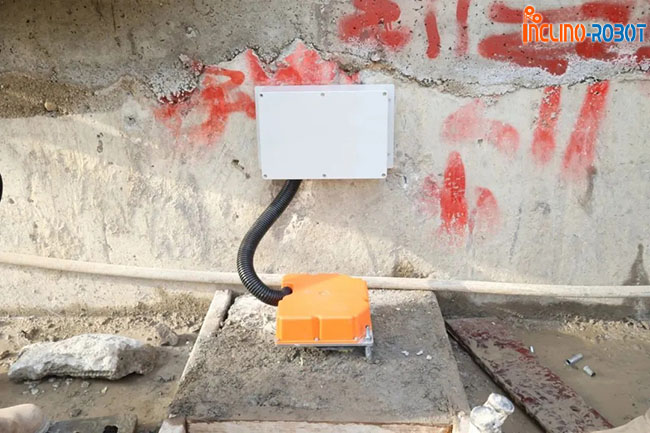
In conventional flexible inclinometer setups, the cost increases significantly as the depth of the borehole increases. This is because traditional systems must be installed at fixed intervals, typically every meter. As the borehole depth grows, the costs increase in a linear fashion due to the increased number of sensors required.
The more economical solution particularly for deep foundation pits offered by Inclino-Robot especially impressed our clients. Even in this foundation pit project with depths of 60 meters, the cost of using the Inclino-Robot is less than half of that associated with traditional flexible inclinometer systems. Its cost-efficiency makes it an ideal choice for large-scale, deep foundation monitoring projects, where minimizing expenses without sacrificing data accuracy.
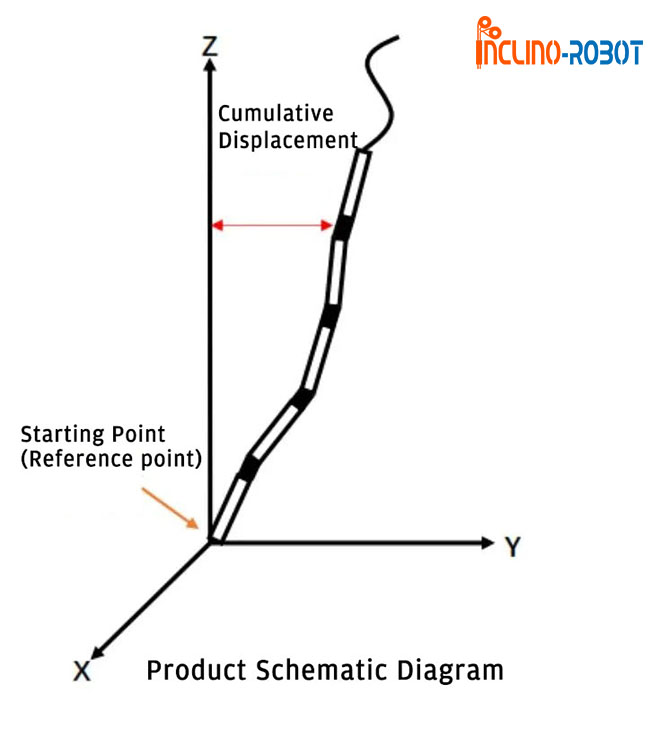
Traditional flexible inclinometers need to be inserted into the tube and secured, which risks misalignment if external factors disturb the sensors. If they get stuck or the tube deforms, removing them often requires a crane. Due to this complexity, many customers discard them after one use. If reused, they may need factory customization because tube depths vary.
The Inclino-Robot is designed for ease of reuse and comprises only three components connected by a steel wire, making installation and removal simple. It can be easily reused across multiple projects, offering superior longevity and value. So far, many of our customers have reused the Inclino-Robot for three or four projects.
In this subway deep foundation pit project, the Inclino-Robot demonstrated its exceptional performance and reliability. This automated inclinometer system, essential for monitoring a massive 334-meter-long, 32-meter-deep foundation pit, proved to be highly accurate, cost-effective, and efficient.
Unlike traditional flexible inclinometers, the Inclino-Robot maintains consistent costs regardless of depth and is reusable, making it a practical choice for large-scale projects. This solution not only addresses concerns about accuracy but also delivers substantial savings and operational efficiency, earning high praise from our clients.